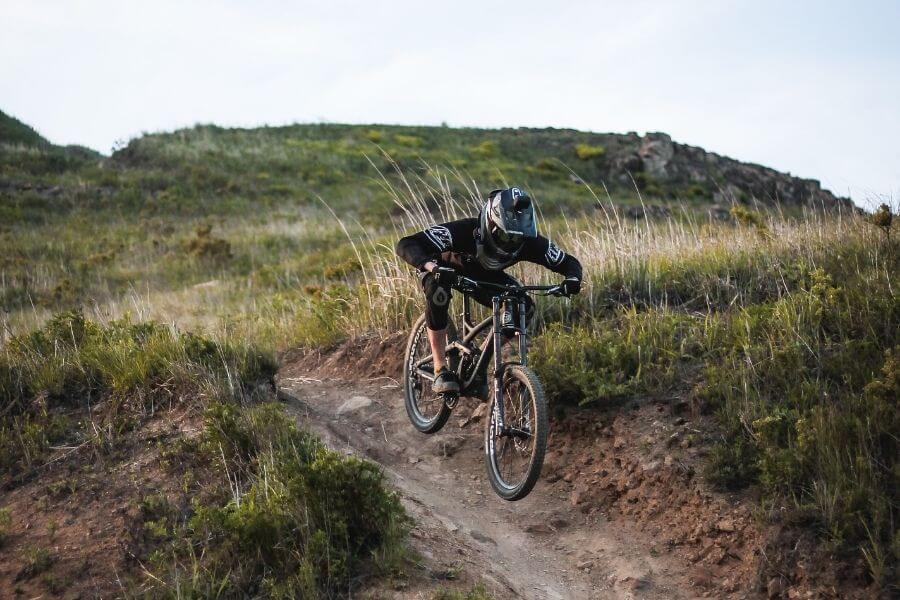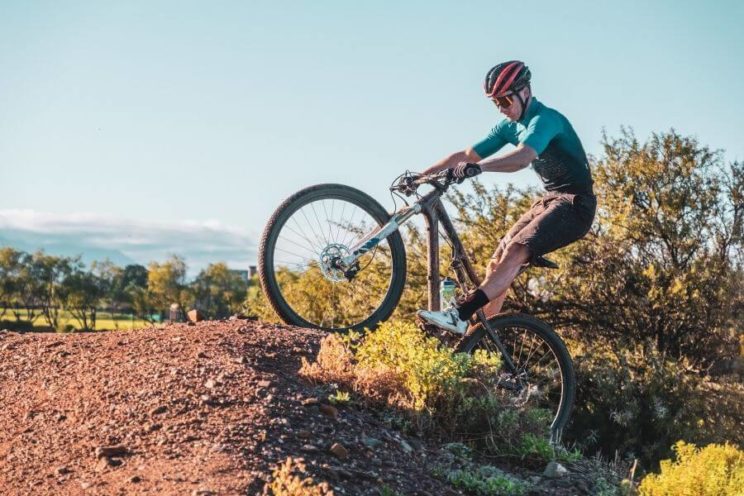The main advantages of practicing Mountain Bike are the freedom and greater security of rolling by bicycle through the field, without sharing via with cars, trucks or motorcycles. But this greater freedom and relaxation does not imply a blank check for
Bikers.
The rural environment also has specific circulation norms and there are many others that need the natural environment to carry out their activity, such as hikers, athletes, riders or hunters. Therefore, it is important to know and stick to current legislation to enjoy the route or training in the most responsible and civic way possible.
In addition, as in streets or roads, breach of these standards entails fines, some even very high amount. We review the most important.
1. Always circulate on public roads
It is true that there are more and more limitations to the practice of
Mountain Bike In the field or mountain. But that is not an excuse to invade private paths owned by farms or trails where bicycle passage is prohibited for environmental reasons. It is a fact that usually repeats and gives weight reasons to those who want to criminalize and end the practice of cycling in rural areas.
That is why the best claim that can be done at the moment, regardless of the great work carried out by associations such as
IMBA For the opening of new roads for cyclists, it is to comply with the norms and circulate only on public use roads.
If you find a flock of sheep or cows, you should know that in the field the priority is always the animals. Then the hikers, the riders and ultimately the cyclists.
How to know what roads are public use? There are different web applications that you can consult. The most useful is the
SIGPAC, created by the Ministry of Agriculture, Fisheries and Food. A map on which you can navigate and locate both public and private roads. In
This article by Jara and Sedal You will also find more detailed instructions on how to use this tool and know if the route you are going to bike is publicly used or it is a private area.
2. Respect the passage of passage
In the countryside, animals on people always have a priority. The most common is to find her herds, sheep or cows, on the roads, to which you must give way if they are crossing for it.
In the case of other users, you must give priority to hikers and riders, in this order. On the other hand, and between
Bikers, although there is no regulation in this regard, you must give preference of passage on a narrow path on slope to whom it is going up.
3. Do not open new roads or modify existing ones
Open new paths or modify them substantially, intentionally and without prior authorization, is prohibited by law. In the case of doing so in a protected space, such as natural or national parks, the economic sanction can reach 1,000 euros depending on the autonomous community or municipality and the severity of the action
Avoid jumping, place catwalks, cut tree branches or skid without being necessary. All this are alterations of the natural environment that entail sanction and do not give a good image to the cycling collective.
[Captation id = "Attachment_6543" Align = "Alignnone" Width = "900"]

(Image: Pavel Anoshin - UNSPLASH)[/caption]
4. It circulates only through forest tracks in protected spaces
Each natural reserve has its own standards, collected in its specific natural resources management plans. But most of them collect similar use limitations for cyclists.
The practice of cycling outside the forest tracks and paths of less than three meters wide is prohibited as a general rule. Although there are exceptions such as the possibility of circulating on traditional roads and paths that collect the Porn of the Guadarrama National Park, in Madrid.
There are even natural or national parks that have delimited, through the corresponding signaling, the itineraries for which cyclists should go. Leaving them implies a slight infraction with a fine of 30 to 600 euros, depending on the nature of the infraction. This sanction can be aggravated if there is intentionality or if you are a repeat offender.
5. Rued in small groups
In the case of going to train or make a route in a more or less numerous group, it is convenient to inform themselves in advance on the limitations of groups of regional and local legislation. Also in the PORN of protected spaces.
In general, there are mobility restrictions in groups of between 10 and 50 people, more restrictive in the case of National Park. If accessing groceries or small cyclist balls, they must circulate in an Indian row or at most in a row of two on wide forest tracks and paths and always stuck on the right margin.
6. Moderate your speed
In parks or massive natural spaces that are close to cities, such as the Casa de Campo in Madrid or the Parc de la Collserla in Barcelona, there are speed limitations for cyclists. In both the limit is 20 km/h, indicated with the respective signaling.
Forest agents or the municipal police have already put fines of 60 euros for this fact in several spaces to more than one cyclist, as reported in
Fat wheels. If there are no specific signals, it is advisable to moderate speed. Especially if it is a space frequented by other users, such as hikers, runners or is frequent passage of animals.
7. Respect the limitations of the hunting grounds
One of the most frequent doubts is whether it can be shot along a path that is within a private hunting preserve. As a general rule, it is possible to cross it if the road is public or if it lacks the approved signal (approved by the municipality or by the Autonomous Community) that prohibits the passage through hunting activity.

In the case of specific hunting events within the closed period (usually from August to February), such as the Monterías, it is possible that the passage through certain paths in the area will be prohibited while the activity lasts. The prohibition of passage, in any case, must be properly marked by means of a notice or side of the respective City Council, indicating the period of time during which the road or path will be kept cut.
8. Close farm doors and cattle steps
It should also be remembered that the different doors or animals of animals in the fence of the farms must close them once again. That will prevent animals from escaping.
9. Gather the waste
Apart from being a civic act and with respect to the environment, leaving the field clean and not throwing waste (bars or spare parts of the bike) is a fundamental norm. In addition, leaving waste in protected areas can be a reason for severe fine.
10. Always use helmet
As on the road, the obligation to wear a helmet on roads and trails, as well as the corresponding lighting and the reflective vest under low visibility conditions. Do not forget that in rural roads there is also traffic, although much lower, and is regulated.
 (Image: Pavel Anoshin - UNSPLASH)[/caption]
(Image: Pavel Anoshin - UNSPLASH)[/caption]
 In the case of specific hunting events within the closed period (usually from August to February), such as the Monterías, it is possible that the passage through certain paths in the area will be prohibited while the activity lasts. The prohibition of passage, in any case, must be properly marked by means of a notice or side of the respective City Council, indicating the period of time during which the road or path will be kept cut.
In the case of specific hunting events within the closed period (usually from August to February), such as the Monterías, it is possible that the passage through certain paths in the area will be prohibited while the activity lasts. The prohibition of passage, in any case, must be properly marked by means of a notice or side of the respective City Council, indicating the period of time during which the road or path will be kept cut.












